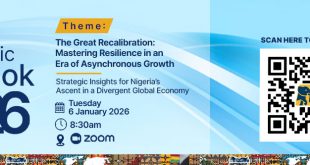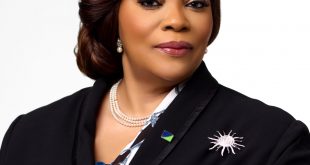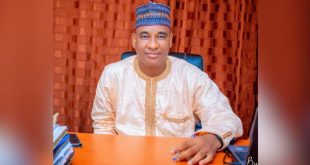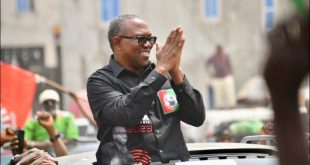
NIGERIA’s debt portfolio rose by 2.3 per cent to N24.947 trillion (about $81.274 billion) in the first quarter of the year, the Debt Management Office (DMO) said in a report released on Wednesday.
“The Total Public Debt (TPD) grew marginally by 2.30 per cent when compared to the figure of N24.387 trillion (about $79.437 billion) as at December 31, 2018,” the report said.
The increase of N560.009 billion in the TPD in the first quarter, the DMO said, was accounted for largely by domestic debt, which grew by N458.363 billion.”
Increases, the DMO added, were recorded “in the Domestic Debt Stock (DDS) of the Federal Government, states and the FCT.”
External debt also increased by N101.646 billion during the same period.
The debt manager stated: “In relation to the Debt Management Strategy (DMS), the ratio of domestic to external debt stood between 68.49 per cent to 31.51 per cent at the end of March (2019).”
The DMO assured that the TPD to GDP ratio would remain at 19.03 per cent within the 25 per cent debt limit imposed by the government.
From the breakdown, the Federal Government of Nigeria (FGN) and states governments’ external debt portfolio account for 31 per cent of the total debt stock, amounting to N7.860 trillion or ($ 25.609 billion).
With regards to the total domestic stock of the Federal Government and states, this now stands at N17.086 trillion (about $55.664 billion) or 68.49 per cent.
The Federal Government accounts for N13.113 trillion (about $42.721billion) or 52 per cent. States and the FCT account for N3.972 trillion (about $12.942 billion) or 15 per cent. This brings Nigeria’s total debt to N24.947 trillion.
The DMO said to arrive at these figures, the debt profiles of 30 states and the debt stocks of five states were considered.
The states are: Abia, Adamawa, Akwa Ibom, Bauchi, Bayelsa, Benue, Cross River, Delta, Enugu, Gombe, Imo, Jigawa, Kaduna, Kano, Katsina, Kebbi, Kogi, Kwara, Nasarawa, Niger, Ogun, Ondo, Osun, Oyo, Plateau, Sokoto, Taraba, Yobe, Zamfara and the FCT, as at March 31.
The five where the debt stocks were used are: Anambra, Borno, Ebonyi, Ekiti and Lagos. That of Rivers was at September, 2018 in the new figures.
The DMO said it used the Central Bank of Nigeria (CBN) official exchange rate of $1/N306.95 as at March 31, 2019, in converting the domestic debts to dollars.
The states debt stock as March 31, are as follows: Abia N62,849,599,630.68; Adamawa (N97,153,965,072.71); Akwa Ibom (N199,768,698,811.90); Anambra (N33,490,668,536.72); Bauchi (N93,319,627,053.30); Bayelsa (N133,339,375,587.91); Benue (N96,905,502,591.02); Borno (N78,259,334,907.05); Cross-River (N167,252,341,140.66); Delta (N223,442,257,101.69); Ebonyi (N55,597,352,310.28); Edo (N86,367,405,983.76); Ekiti (N118,011,414,814.34); Enugu (N55,882,997,585.01); Gombe (N76,894,514,835.51); Imo (N97,851,149,167.90); Jigawa (N38,227,157,463.84); Kaduna (N93,203,947,964.61); Kano (N121,305,201,113.25); Katsina (N67,098,008,669.65); Kebbi (N67,037,456,840.31); Kogi (N96,677,066,212.09); Kwara (N59,576,712,572.23); Lagos (N542,231,174,761.82); Nasarawa (N89,953,619,684.92); Niger (N43,414,653,538.03); Ogun (N97,090,119,332.73); Ondo (N56,959,970,712.20); Osun (N147,702,865,382.96); Oyo (N94,140,261,739.96); Plateau (N98,585,866,556.33); Rivers (N225,592,469,150.22); Sokoto (N36,571,742,397.44); Taraba (N68,569,699,976.43); Yobe (N26,990,637,417.62); Zamfara (N61,950,819,816.58); FCT (N163,518,714,908).
 DailyrecordNg …Nigeria's hottest news blog
DailyrecordNg …Nigeria's hottest news blog








